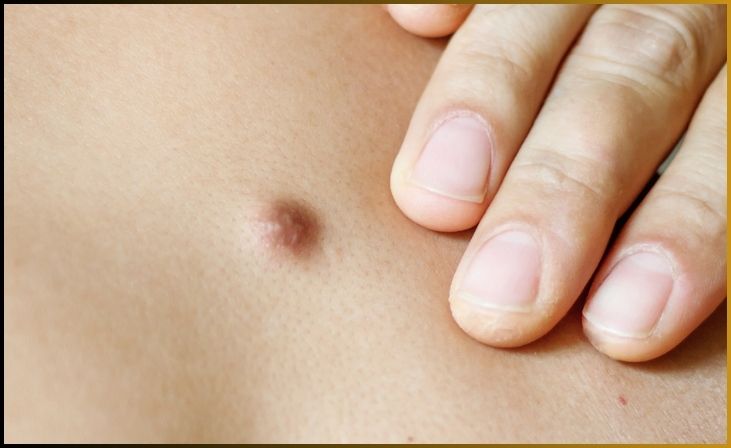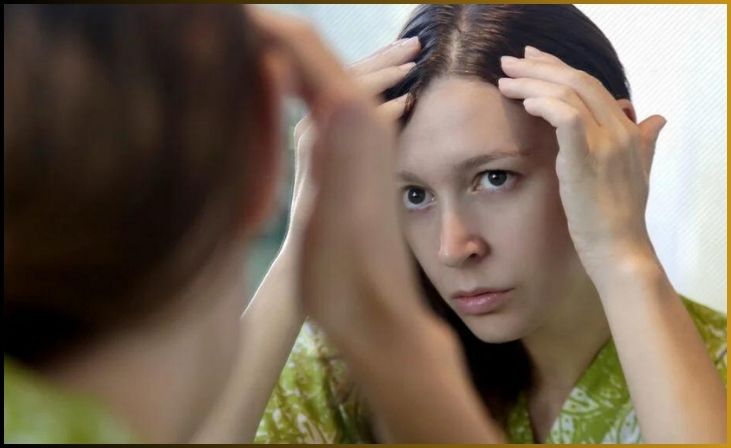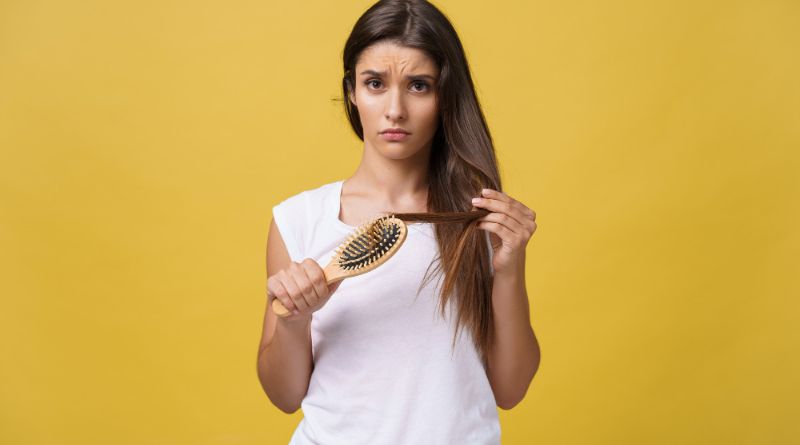Pilar cysts, those small, benign bumps that can appear on your scalp, often raise questions about their removal and the potential regrowth of hair in the treated area. They may occur anywhere on your body, but the scalp is the most prevalent location. In most cases, pilar cysts pose no threat to your health. However, pilar cysts may be annoying and cause discomfort while combing hair, even if they are not hazardous.
If you’ve had a pilar cyst removed or are considering the procedure, you’re likely curious about what to expect regarding hair regrowth. Basically, pilar cysts need to be removed by a doctor. But there is one doubt that remains in one mind, will hair grow back after pilar cyst removal?
This blog post delves into the fascinating world of pilar cyst removal and addresses the common queries associated with it. We’ll explore the process of cyst removal, the factors influencing hair regrowth, and what you can do to ensure the best possible outcome. Whether you’re seeking reassurance after a cyst removal or seeking information for an upcoming procedure, understanding the relationship between pilar cysts and hair regrowth is essential. So, let’s embark on this informative journey to unravel the mysteries of hair regrowth after pilar cyst removal.
Hair would not regrow over the scar if it was surgically removed. That being said, it is possible that hair might regrow if the cyst is self-healing.
Let’s get to know more about this issue in detail!
What is a Pilar Cyst?

Pilar cysts, also known as trichilemmal cysts or wens, are benign growths that often appear as flesh-colored lumps on the skin’s surface. While these cysts are typically noncancerous and not a cause for immediate concern, they can be cosmetically bothersome. Recognizing the features of pilar cysts on your own is possible, as they usually present as round, painless nodules with a smooth surface. However, it’s crucial to consult your doctor for an official diagnosis and to rule out any other conditions that might have similar appearances.
Seeking professional medical guidance ensures an accurate assessment of the cyst’s nature and the formulation of an appropriate management plan. Your doctor can provide you with insights into treatment options and help address any concerns you may have about pilar cysts, ensuring your peace of mind and, if necessary, offering solutions to minimize their impact on your appearance.
What Causes Pilar Cysts?
Pilar cysts typically originate from blocked hair follicles, a gradual process that unfolds over time. They can manifest not only on the scalp but also on areas like the face, neck, chest, stomach, and back, as hair follicles are distributed throughout the body. However, they tend to be more prevalent on the scalp due to the natural oils produced to nourish hair.
The development of pilar cysts is closely linked to the skin’s outermost layer, the epidermis. As old skin cells are shed, these cells may not naturally slough off but instead move beneath the skin’s surface. In this environment, they continue to multiply as if they were still part of the hair follicle. Consequently, they become trapped under the skin, leading to their accumulation and the formation of a pilar cyst, which presents as a noticeable bump on the scalp. Understanding this underlying process can shed light on how these cysts develop and the factors that contribute to their occurrence.
How common are Pilar Cysts?
Pilar cysts are considered a relatively rare skin ailment, with only an estimated 5% to 10% of the population experiencing this condition. While they are not commonly observed in the general population, research and evidence suggest a familial component. It appears that pilar cysts tend to run in families, meaning there is a hereditary predisposition to this condition. In fact, individuals with a family history of pilar cysts are approximately twice as likely to develop the ailment themselves compared to those without a family history.
This familial link underscores the genetic influence on the occurrence of pilar cysts. While they may be infrequent in the broader population, the condition’s hereditary nature implies that a genetic predisposition plays a significant role in its development. Understanding this hereditary aspect can be crucial in both diagnosis and treatment considerations for those affected by pilar cysts.
How to Treat Pilar Cysts?
Pilar cysts can be treated in two ways:
1) Self-healing
An untreated pilar cyst on your scalp has the potential to spontaneously resolve over time. However, it’s essential to understand that this regression process can be just as gradual as the cyst’s initial growth. The rate at which it shrinks back down is notably slow, particularly when dealing with larger cysts that require the drainage of a significant volume of fluid. While some pilar cysts might naturally decrease in size or even disappear without intervention, it’s important to keep in mind that their persistence and potential for enlargement are variables that may necessitate medical attention.
Monitoring the cyst’s behavior, size, and any associated symptoms is advisable, as professional medical evaluation and treatment may be required to address larger, persistent, or bothersome pilar cysts.
2) Surgical Removal
While pilar cysts are typically benign and not a cause for concern, they can become bothersome and uncomfortable, especially when combing or styling your hair. In cases where these cysts become a source of irritation, an outpatient procedure performed by a medical professional may be recommended for removal. This procedure involves making a small incision into the cyst, draining the accumulated fluid, and meticulously removing the cyst wall. By removing the cyst wall, the chances of its recurrence are significantly reduced, ensuring that the cyst does not reappear in the future.
This minor surgical intervention not only alleviates any discomfort associated with the cyst but also addresses any cosmetic concerns. Consulting with your doctor can provide valuable insights into the best course of action, allowing for the safe and effective removal of pilar cysts, and ultimately enhancing your comfort and well-being.
When can I shower after Pilar cyst removal?
Following the removal of a pilar cyst, it’s essential to adhere to specific post-operative care guidelines. Typically, after 36-48 hours post-surgery, you can resume taking showers, taking care to avoid direct contact with the surgical site. However, baths should be postponed until the wound is fully healed to prevent any risk of infection or complications. It’s crucial not to bathe or swim while the incision is still open or while any fluid drainage is occurring. Approximately one week after the operation, you may gradually resume strenuous physical activities.
Adhering to these recommended timelines and practices is essential for promoting proper wound healing and minimizing the risk of complications, ensuring a smooth and successful recovery after the removal of a pilar cyst. Consulting with your healthcare provider regarding post-operative care is advisable for personalized guidance and to address any specific concerns you may have.
Will hair grow back after Pilar Cyst removal?
Hair regrowth over the scar area resulting from surgical removal of a pilar cyst is typically unlikely. However, the potential for hair to return may depend on the cyst’s natural healing process. The extent of inflammation and subsequent scarring will play a pivotal role in determining whether hair follicles can resume their normal function.
In cases of inflammation, hair follicles may enter the telogen (rest) phase but can potentially generate new hair after several months. However, if the inflammation was severe enough to result in significant scar tissue formation, this could lead to permanent damage to the hair follicles. Such permanent damage would impede the follicles’ ability to produce new hair growth. The likelihood of hair regrowth over the surgical scar area can be influenced by the individual’s unique healing process, the extent of inflammation, and the degree of scarring. Consulting with a medical professional can provide valuable insights into the specific circumstances and potential outcomes in your case.
Will there be a bald spot after cyst removal?
As a pilar cyst progresses, it may undergo changes in color, appearing white or yellowish. In cases where the cyst grows significantly, it can lead to hair thinning or even create a bald area, as hair cannot develop on or around the cyst. When faced with such symptoms or concerns related to pilar cysts, consulting a medical professional is crucial. A doctor can provide a comprehensive evaluation of the cyst, and its impact on the surrounding hair and skin, and offer appropriate solutions or treatment options.
Addressing these issues with medical guidance ensures that you receive the necessary care and interventions to manage the cyst’s progression and any related cosmetic or comfort concerns. It’s important not to delay seeking medical advice when encountering significant changes or disruptions in the area affected by a pilar cyst.
Are pilar cysts dangerous?

The majority of pilar cysts are diagnosed as benign, which means they are non-cancerous growths. Current research suggests that when left untreated, these cysts are generally not prone to developing into malignant tumors. However, there is a potential risk associated with pilar cysts—spontaneous rupture or disruption due to external contact, like a bump or impact. While this occurrence can be uncomfortable and may lead to skin irritation or infection, it is typically not life-threatening. Even in the event of a ruptured or disturbed pilar cyst, the outcome is generally benign, and there is no cause for excessive concern.
Nevertheless, seeking prompt medical attention if such an event occurs is advisable, as medical professionals can provide the necessary care to manage any related discomfort or complications effectively.
How to prevent pilar cysts?
After gaining a comprehensive understanding of pilar cysts, it’s natural to wonder if there are measures one can take to prevent their formation. However, it’s important to acknowledge that there is currently no known method for preventing pilar cysts from developing. These cysts can emerge spontaneously, and their formation cannot be predicted or prevented by any specific actions or precautions. It’s a condition that may occur in individuals without prior warning, making it challenging to anticipate when or where pilar cysts will form.
While there are ways to manage and treat them, the onset of pilar cysts remains largely unpredictable, highlighting the importance of regular skin and scalp examinations and seeking prompt medical attention if you notice any unusual growths. Understanding the limitations in preventing pilar cysts underscores the significance of vigilance and early intervention for any concerns related to these cysts.
What do you need to do?
Pilar cysts are typically benign and not a cause for immediate concern, and the decision to undergo surgical removal is usually made in consultation with your healthcare provider. Even if you don’t find them bothersome, it’s advisable to monitor pilar cysts for any unusual changes or developments. Should you observe any atypical alterations in the appearance or behavior of a pilar cyst, contacting your doctor promptly is essential.
While pilar cysts are generally harmless, there are rare instances in which they may undergo malignant transformation. In such cases, these tumors tend to exhibit rapid growth and proliferation. Surgical removal becomes imperative in the presence of malignant transformations to address the potential health risks associated with these rare scenarios. Regular vigilance and medical consultation are fundamental in ensuring the appropriate management of pilar cysts, regardless of whether they are perceived as bothersome or not.
Bottom Line
In conclusion, hair typically regrows after pilar cyst removal, but the timing and quality of regrowth can vary. Factors such as the size and location of the cyst, the surgical technique used, and individual differences play a role in determining how quickly and fully hair returns. Most people experience hair regrowth, although it may take some time. If you have concerns about the progress of regrowth, it’s advisable to consult with a medical professional. Proper aftercare and attention to the surgical wound can also support healthy hair regrowth. Remember that individual experiences can differ, so patience and monitoring your progress are key aspects of the journey after pilar cyst removal.
So this was all about Pilar cysts. We hope you found the right answer to your query, ‘Will hair grow back after pilar cyst removal?’ Please let us know your thoughts & suggestions in the comments below!
Thank you for reading!
FAQs
While hair usually regrows after cyst removal, it’s not guaranteed. Factors such as the cyst’s size, location, and the surgical approach can influence regrowth outcomes.
The timing of hair regrowth can vary, but it typically starts within a few weeks to a few months after cyst removal.
Maintaining a clean and well-moisturized surgical site can support healthy hair regrowth. Follow your healthcare provider’s instructions for post-cyst removal care.
If you’re concerned about the progress of hair regrowth, it’s best to consult with your healthcare provider. They can assess the situation and provide guidance on any necessary interventions.
Handpick Article for You
how long should you brush your hair for waves







